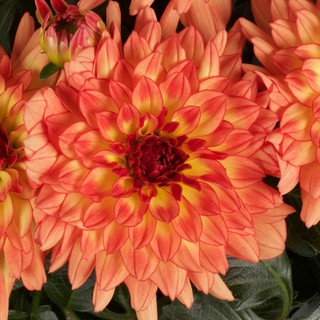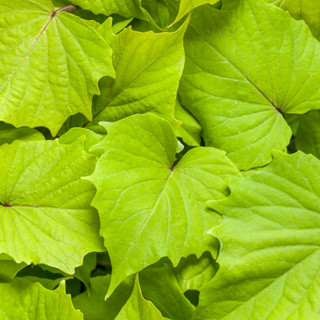Vinca
Uses:
- Container Filler and Spiller
- Borders
- Low-growing Flowers and Groundcovers
Features:
- Drought Tolerant & Deer Resistant
- Pollinator-Attracting Flowers
- Grown for Foliage & Flowers
Sunlight:
- Partial Sun to Full Sun
- 4+ Hours of Direct Sun
- Will Survive With Less Sun
Growing Zones:
- Perennial is Typically Zones 4-8
- Annual is Typically Zones 7-10
- What is My Zone?
Vinca plants (also called periwinkle) are excellent container fillers to add to the garden, in containers, hanging baskets, window boxes, or in flower beds each year. They bloom from spring through early summer and into fall with tiny pinwheel-shaped flowers.
Growing Vinca
Vinca, also commonly called common periwinkle, is an annual plant grown for its foliage, ability to fill or spread, and its delicate pinwheel-like flowers. The plant is an annual in colder regions, but some varieties are perennials, coming back each year in zones 4 through 9.
Annual varieties (Catharanthus) are pretty fillers for garden beds or container gardens, and typically reach only about 6 inches high. Trailing varieties spill over containers, walls, or hanging baskets. With a variety of flower colors and even choices of variegated leaves, vinca is a versatile plant for full sun and even drought-tolerant gardens. We offer several annual vinca varieties with flowers in pinks, purples, and whites. We also have variegated vinca vines for sale, and the trailing plants add interest to hanging baskets and containers with their vine-like stems filled with dark green leaves with cream-colored highlights.
Vinca is known for its easy care and for resisting pests and disease. Its low growth habit makes it a versatile flowering plant choice. Plant your vinca in full sun or part sun and watch it flower and spread, spilling over a wall or container edge. Although the plants can handle drought, they need average watering, and little other care.
Vinca is also known as periwinkle, common periwinkle, English Holly, and creeping myrtle. Perennial vinca is called vinca minor and grows more like a mat of evergreen leaves and purple flowers.
The Best Way to Use Vinca
Plant annual vinca in a hanging basket, spilling over with small flowers or variegated foliage. As a filler in a patio container, providing a low and attractive low-growing layer around taller flowers or grasses.
Use perennial vinca as an evergreen groundcover in a small bed or around a small tree. Most annual vincas grow to about 6 inches high or shorter and spread from about 1 to 2 feet, either in a trailing or low mound habit.
Vinca prefer well-draining soil and at least partial sun. Although vinca prefer slightly acidic soil, they can grow in most soil types. Vincas need little fertilizing other than monthly addition of balanced fertilizer or compost. Vinca attract butterflies but rabbits and deer leave the plants alone.
Vinca Companion Plants
Plants that go well with annual vincas are other annual plants grown for color and foliage. In full sun, pair vinca with sweet potato vines, dahlias, coleus, or snapdragons.




